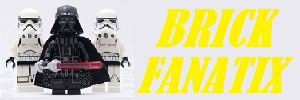Hungarian Toy Cars – Trafikáru, Metalcar, Matchy, and the Icons of the Socialist Era
Hungarian toy cars represent a fascinating chapter in the history of creativity, craftsmanship, and ingenuity during the socialist era. Brands like Trafikáru, Metalcar, Matchy, and others played a significant role in producing affordable, durable toys while navigating the challenges of the time.
The Early Days of Hungarian Toy Car Manufacturing
Hungarian toy car production gained momentum in the mid-20th century as part of the socialist push for industrialization and the need to supply domestic markets. Known for their simple yet robust designs, these toys were often inspired by vehicles commonly seen on the roads of the Eastern Bloc. They not only delighted children but also reflected the resourcefulness and creativity of the era.
Major Brands and Their Contributions
Trafikáru
Trafikáru became a household name in Hungary, offering a wide range of affordable toys, including toy cars. Their models were often made from plastic or tin, ensuring durability while keeping costs low. Popular designs included replicas of iconic Eastern Bloc vehicles such as Trabants, Ladas, and Wartburgs. These toys were widely available in small shops and kiosks, making them accessible to nearly every family.
Metalcar
Metalcar specialized in die-cast metal toy cars, offering a premium alternative to plastic models. Known for their solid construction and realistic details, Metalcar’s products included trucks, buses, and passenger cars, often featuring moving parts like opening doors and rotating wheels. Their toys were highly popular and remain sought-after collector’s items today.
Matchy
While less internationally recognized, Matchy played a crucial role in Hungarian toy car production. They created small-scale models that mimicked the aesthetics of Western brands like Matchbox. Despite limited resources, these toys captured children’s imaginations with their vibrant colors and diverse vehicle types.
Other Hungarian Manufacturers
Beyond the major players, smaller workshops and factories contributed unique and often handcrafted toy cars to the market. These models ranged from simple designs to detailed representations of buses, emergency vehicles, and even construction machinery. These toys showcased the ingenuity of Hungarian manufacturers despite material and economic constraints.
Materials and Manufacturing Techniques
Hungarian toy cars were primarily made from tin, die-cast metal, and plastic. Given the limited availability of resources, manufacturers often employed innovative methods to maximize material use while maintaining functionality. Common techniques included tin stamping, injection molding, and hand-painting.
Iconic Models and Features
- Trabant Models: Simple yet iconic, these captured the essence of Eastern Bloc transportation.
- Lada Replicas: Detailed interiors and realistic paintwork.
- IKARUS Buses: Paying homage to Hungary’s famous bus manufacturing legacy, often with working doors and rotating wheels.
- Construction Vehicles: Bulldozers, cranes, and dump trucks made from tin or sturdy plastic.
- Emergency Vehicles: Police cars, fire trucks, and ambulances adorned with colorful decals.
Cultural Impact and Collectible Value
During the socialist era, Hungarian toy cars were more than just playthings; they symbolized innovation and perseverance. For many, these toys hold nostalgic value, cherished as generational treasures. Today, they are prized by collectors worldwide for their craftsmanship and historical significance.
Why Hungarian Toy Cars Deserve Attention
- Historical Significance: They represent an era of resourcefulness and creativity.
- Durability: Many models retain their functionality decades later.
- Unique Designs: Inspired by Eastern Bloc vehicles, they offer a glimpse into a bygone era.
Explore the captivating world of Hungarian toy cars and discover the creativity and craftsmanship that defined a generation!


